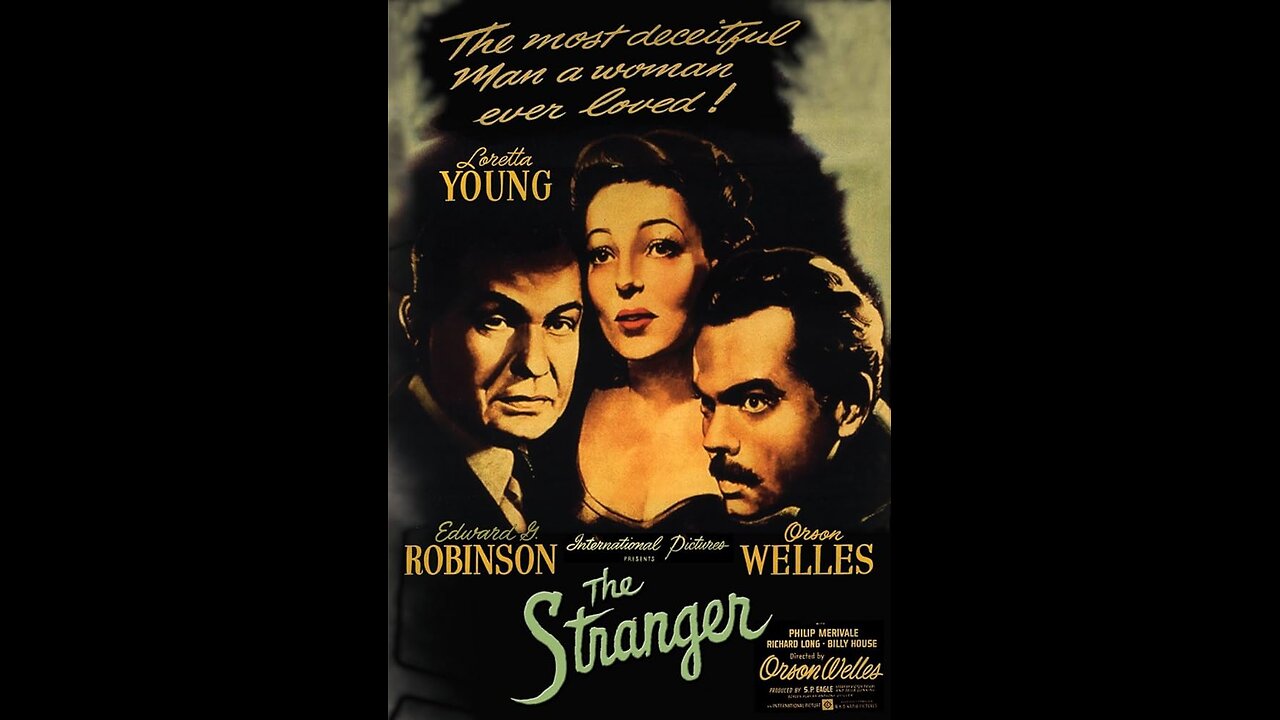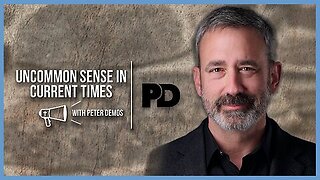Premium Only Content

The Stranger (1946) | American film noir directed by Orson Welles
"The Stranger" is a 1946 American film noir directed by Orson Welles, who also stars in the film alongside Edward G. Robinson and Loretta Young. The film is known for its suspenseful narrative, atmospheric cinematography, and exploration of post-World War II themes.
The story centers around Mr. Wilson (Edward G. Robinson), an investigator for the Allied Commission in the war crimes division. He is tasked with tracking down and bringing to justice fugitive Nazis who have escaped Europe and are hiding in the United States. Wilson becomes particularly interested in finding an elusive and mysterious man named Franz Kindler (Orson Welles).
Kindler, the architect of the Holocaust, has managed to erase all traces of his identity and has assumed a new life in a small American town, Harper, Connecticut. There, he has married Mary Longstreet (Loretta Young), the daughter of a Supreme Court justice. Unbeknownst to Mary, her husband is living under a false identity, and Wilson is determined to expose him.
As Wilson digs deeper into Kindler's past, he faces various obstacles, including the reluctance of the townspeople to believe that a respected member of their community could be a war criminal. The film unfolds as a psychological thriller, with Wilson closing in on Kindler and the tension escalating as the truth is unveiled.
"The Stranger" is praised for its taut and suspenseful storytelling, characteristic of the film noir genre. Orson Welles, known for his innovative filmmaking techniques, creates a moody and atmospheric film that explores the aftermath of World War II and the consequences of Nazi war crimes.
Edward G. Robinson delivers a strong performance as the determined investigator, while Welles, who also directed the film, skillfully portrays the enigmatic and sinister Kindler. Loretta Young provides a sympathetic and unsuspecting portrayal of Mary, who becomes entangled in a web of deceit.
The film addresses themes of guilt, redemption, and the moral repercussions of war. Welles uses visual symbolism and shadowy cinematography to enhance the noir atmosphere, creating a sense of moral ambiguity and psychological tension.
"The Stranger" was a critical and commercial success upon its release and is considered one of the notable films of the post-World War II era. It remains a compelling example of film noir, blending a gripping narrative with strong performances and atmospheric direction.
-
 1:32:34
1:32:34
Glenn Greenwald
4 hours agoThe Future of Gaza With Abubaker Abed; Journalist Sam Husseini On His Physical Expulsion From Blinken’s Briefing & Biden’s Gaza Legacy | System Update #391
49.4K53 -
 1:34:48
1:34:48
Roseanne Barr
7 hours ago $2.26 earnedWe are so F*cking Punk Rock! with Drea de Matteo | The Roseanne Barr Podcast #83
43K35 -
 DVR
DVR
Man in America
8 hours ago🇨🇳 RedNote: A CCP Trojan Horse Deceiving Americans? w/ Levi Browde
7.6K12 -
 LIVE
LIVE
I_Came_With_Fire_Podcast
10 hours agoTrump SABOTAGE, LA FIRE CHIEF SUED, and BIDEN’S LAST F-U!
257 watching -
 LIVE
LIVE
Joker Effect
2 hours agoUkraine in a video game? Hardest thing I have done. S.T.A.L.K.E.R.2 Heart of Chornobyl,
755 watching -
 1:15:22
1:15:22
Flyover Conservatives
22 hours agoEczema, Brain Fog, B.O., and Gas… Eating Steak and Butter Creates Ultimate Health Hack - Bella, Steak and Butter Gal | FOC Show
15K -
 51:58
51:58
PMG
6 hours ago $0.04 earned"Can the Government Learn from Elon Musk’s 70% Labor Cut? A Deep Dive into Inefficient Agencies"
10.5K -
 LIVE
LIVE
Amish Zaku
5 hours agoRumble Spartans #10 - New Year New Maps
184 watching -
 1:04:58
1:04:58
In The Litter Box w/ Jewels & Catturd
1 day agoNo Tax On Tips! | In the Litter Box w/ Jewels & Catturd – Ep. 722 – 1/17/2025
136K32 -
 5:35:39
5:35:39
Dr Disrespect
12 hours ago🔴LIVE - DR DISRESPECT - WARZONE - CRAZY CHALLENGES
160K33